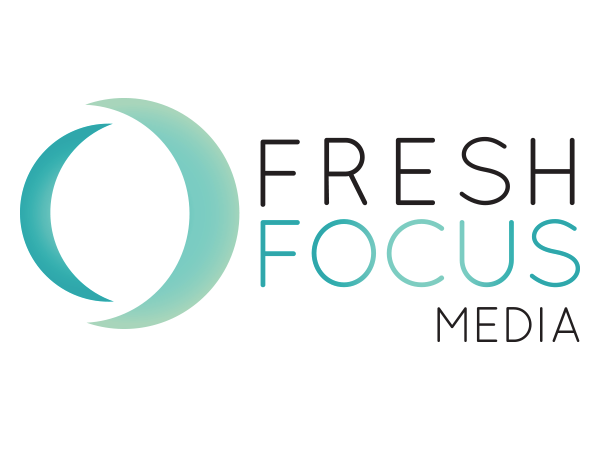EMPOWER YOUR BUSINESS WITH FRESH MARKETING PERSPECTIVES
January 17, 2020 6:32 pm | Category: Uncategorized
INBOUND & OUTBOUND MARKETING

SUCCESSFUL OUTBOUND MARKETING
How many ads do you think you see a day? According to Forbes 2019, we are exposed to 4,000 – 10,000 ads per day, and we are now so used to it that we start a screening process through the ads we have an interest in and those we don’t. It depends entirely on the company that’s advertising how the customer is going to react to them. Staying consistent, differentiating against competition, providing continuity of customer experience and keeping themselves top of mind keeps people interested. This type of marketing is called outbound marketing, which is also known as traditional marketing. This includes:
- Radio
- TV
- Newspapers
- Magazines
- Direct mail
- Billboards
- Event sponsorships
The Most Effective Outbound Marketing Tactics in 2020
It’s getting harder for companies to build successful marketing ads as:
- 91% of email users have unsubscribed from an email they previously opted into
- 86% of people skip TV ads, or never see them as they use a streaming service
- Digital music services and satellite radio make it easy for listeners to avoid radio advertising
- 44% of direct mail is never opened. Referred to as “junk mail,” this tactic has surprisingly low effectiveness
- 84% of 25-34 year olds have left a website because of intrusive or annoying advertising
The big question is, what outbound marketing techniques should you consider this year, and which aren’t worth your time and money? According to a recent survey, these are what consumers are most and less likely to care about when being exposed to outbound advertising:
- Cold Emails – Not to be confused with spam, a cold email is an unsolicited email that is sent to a receiver without prior contact.
- Cold Calls – This is a more direct attempt to convince potential customers to purchase the salesperson’s product or service.
- Search Ads – These are sponsored ads, search marketing, search engine marketing, pay-per-click marketing and cost-per-click marketing.

INBOUND vs. OUTBOUND MARKETING
As you can see, outbound marketing pushes a message to a wide audience, whereas inbound marketing works as a “magnet” to attract potential customers. By implementing inbound marketing, you will know more about your customers and what messages they will respond to best. Therefore, you can better target your ad messages and improve the likelihood customers will respond to them.
Successful inbound marketing strategies start by letting your customers come to you rather than you pursuing leads. You will need to make your customers choose to interact with your content. Some of these strategies include:
- SEO – Having a quality website and content optimized for SEO ensures that Google will be able to identify and index your website’s content to have it appear for free to people searching.
- Content Marketing – Your content must be remarkable enough to break through the clutter. It’s not enough to just produce content. Examples include:
- Blog
- Guides, e-books, downloadable content
- Landing Pages – You need to ensure your landing page is top-notch to ensure potential conversions are coming in.
Why would you use inbound marketing?
Once a customer has visited your website and expressed an interest in your offerings, you need a strategy in place to keep them engaged. One of the most effective tactics – remarketing. This tactic cookies your website visitors and follows them around the web with ads, reminding them to come back.
Remarketing can be set in a variety of ways. For instance, you can remarket to anyone who visited your website, show specific ads to visitors who went to a certain page (or a set of pages) or even advertise to someone who has placed items in a shopping cart, but hasn’t converted to a purchase yet.
BRANDING STRATEGIES TO EMPOWER YOUR BUSINESS
Your brand is the first impression customers have of your business
Branding is a way of distinguishing yourself from competitors, clarifying what it is you offer and what makes you the better choice. Your brand is your promise to your customer. It tells them what they can expect from your products and services, and it differentiates your offering from your competitors. Your brand is derived from who you are, who you want to be and who people perceive you to be. But why is branding absolutely important?
- Branding gets recognition
- Increases business value
- Generates new customers
- Improves employee pride & satisfaction
- Creates trust within the marketplace
Have you considered how you look to your customers?
The founder of Amazon, Jeff Bezos, says it best: “Your brand is what other people say about you when you’re not in the room.” This means your branding is your reputation, so it’s important to know how to build it properly. These are our How To Build a Brand Tips & Strategies:
- Determine your brand’s target audience – When brand building, keep in mind who you are trying to reach. Tailor your mission and message to meet their exact needs. What age, gender, location, income & education level is relative to your target market?
- Establish your brand’s mission statement – The mission statement basically defines a purpose for existing. It will inform every other aspect of your brand building strategies. What is your company’s mission statement?
- Research competitor’s brands – It’s important that you never copy what your industry niche is doing, but you should be aware of where they’re succeeding and failing. Who are your competitors and what are they doing right and wrong?
- Create a brand logo & tagline – The most exciting aspect of the brand building process is creating a logo and tagline for your company; it will become your identity, calling card and the visual recognition of your promise. What does your logo and tagline represent?
- Form your brand’s voice – How you communicate with your customers, and how they respond to you. Is your brand’s voice professional, friendly, promotional, informative?
- Build a brand message & elevator pitch – Come up with a short description of your brand that explains the concept in a way such that anyone can understand it in a short period of time. Who you are, what you offer and why people should care.
- Integrate your brand into every aspect of your business – Anything that your customer can see, read and hear, from business cards to advertisements, packaging and products, digital marketing, email, etc. Everything needs the stamp of your logo. How are you integrating your brand in your company’s daily profile?
Bring attitude and life to your business with dynamic creative design that provides the visual impact that drives revenue!
The one thing you’ll want to remember is that branding is a verb. It’s an action. So while it might seem daunting at first, considering all of the planning, assets and personnel that go into cultivating an unforgettable brand. Rather than letting others tell your story, you’re speaking up with branding.
If you ever feel lost in the process, remember that support is always at hand. Once you have established your branding vision, get in touch with a professional designer to help to bring your brand to life.
WEBSITES – WHY IS IT IMPORTANT TO HAVE AN UNFORGETTABLE LANDING PAGE?

Websites are essential for all businesses
It still amazes us how many small and medium sized businesses don’t have a website. They are missing the best opportunity to generate more customer traffic and drive profit to their company. The Internet has become the best tool for buying and selling services, and is the best tool your customers can share your brand and information through without you being the medium for this to happen! Remember – people are always online.
There’s a specific person with a specific problem looking to fill a specific need – people are always researching different kinds of products or services online to find the right fit for them. By building a website, you not just get involved as one of the possible offerers; but you can also learn how to manipulate search engines to make potential customers find you first.
Here are some of the benefits of a website you might not know about:
- Improves your advertising effectiveness
- Saves money on printing & distribution costs
- Easy access to new customers
- Improves productivity
- Easy to use & update
- Builds your reputation
- Improves customer service
Is your website content up to date?
There are many reasons why you should always keep your website updated, such as:
- Improved search ranking results – Updating your website constantly should be done so people can easily find you.
- Improved customer experience – Visitors to your website will expect that it’s fast to load, so ensuring you regularly maintain your website will help this. Also, your website needs to continually be updated with the latest web standards so it’s available on all devices, and not just older computers and Internet browsers.
- Company impression – An updated website gives an impression that your company is growing and is gaining a good reputation online. This will make people excited to visit your website.
- Web security purposes – Hackers are everywhere; ready to get vital information about you, your company and your customer’s information. This can be mitigated by tightening and improving the security of your website files, along with updating login details frequently.
- Keeping current customers & attracting new ones – Regular updates to your website makes your customers come back more regularly, resulting in content customers with a possibility that they will recommend your business to others.













